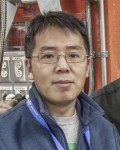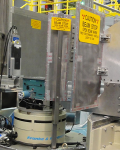Engines, laptops and power plants generate waste heat. Thermoelectric materials, which convert temperature gradients to electricity and vice versa, can recover some of that heat and improve energy efficiency. A team of scientists at the Department of Energy’s Oak Ridge National Laboratory explored the fundamental physics of the world’s best thermoelectric material—tin selenide—using neutron scattering and computer simulations. Their new understanding of the origin of atomic dynamics in this material, published in Nature Physics, may aid research in energy sustainability and enable the design of materials that efficiently convert heat into electricity.
“We performed the first comprehensive measurements of atomic vibrations in this important new thermoelectric material,” said senior author Olivier Delaire in ORNL’s Materials Science and Technology Division. “We discovered the origin of its very low thermal conductivity, which leads to its high efficiency.” It turns out unusual atomic vibrations help prevent “heat leaks,” maximizing the conversion into electricity.
DOE’s Office of Science, which advances materials for energy technologies, sponsored the study, which was led by an MIT-led Energy Frontier Research Center. The researchers used three DOE Office of Science User Facilities at ORNL—the Spallation Neutron Source, High Flux Isotope Reactor and Oak Ridge Leadership Computing Facility.
Through the Seebeck effect, thermoelectric devices produce a voltage and generate electric current when a temperature differential is maintained. Or, when powered with an external electricity source, the devices can actively pump the heat out for refrigeration applications.











